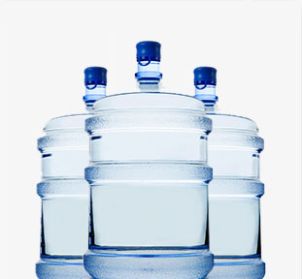
Home Cooks: Are You Paying Attention to the Most Important Ingredient?

You may buy the freshest ingredients and use the highest-rated appliances and gadgets to create spectacular dishes and beverages for your family and friends. But is one factor—the most basic of all—slipping past your quality control? Are you considering the quality of one of the most common recipe additions: your water?
Whether you’re using it in soups, sauces and stews; for cooking pasta and other noodles; or to craft refreshing beverages, how good your water is can be a key element in the taste of your finished product. Using water that’s cleaner, fresher and pure-tasting as an ingredient (and of course, to rinse produce) can help make your food and drink recipes turn out exactly as you desire.
Top Water Problems That Mess With Your Recipes
It’s easy to see how water or ice that smells funny or doesn’t taste great makes beverages containing it smell funny and not taste great. What’s not always top of mind is how water with impurities can impact food. Some of the most common water issues that can interfere with cooking include:
A Metallic Taste
This can be caused by high levels of iron or copper. Unless you’re going for a “taste like pennies” kind of vibe, it can be a problem.
A Swimming-Pool Sensation
Chlorine is a common disinfectant that helps keep our water safe. While its unpleasant taste and bleach-like odor may remind you of happy days splashing in the sun, you’d probably prefer to leave chlorine out of your meals.
A Rotten-egg, Sulfur Odor
Elevated levels of hydrogen sulfide gas can cause this nasty smell that is most unappetizing. It’s a particularly common issue with well water.
An Earthy, Swampy or Musty Taste
Naturally decaying organic matter, which is also more common in well water, is to blame for this issue. It’s not quite the “organic” ingredient you’re looking for, right?
Salty or Bitter Flavors
These usually indicate your water has elevated levels of total dissolved solids. The dissolved materials can include minerals, salts and metals – and it’s hard enough to control the saltiness and bitterness of your dishes without your water interfering.
The Best Recipes Call for Fresh, Filtered H2O
You might think you’re good to go with your pitcher or refrigerator filter, but you might be surprised to learn that the filtration capabilities of these products can be quite limited. Many use an activated carbon filter, which typically address only some of the chemicals that impact water’s taste and odor.
A multi-stage filtration approach – like those typically found in reverse osmosis (RO) systems – is often much more comprehensive. RO systems also provide fresh, filtered water right from your kitchen tap, making it a convenient alternative to your pitcher or fridge.
If you suspect that your home’s water could be keeping your food and drinks from tasting as good as they should, consider having your water tested. If impurities show up, finding the right solution is as simple as calling your local Culligan water experts.
Ready to get the best water for your food and drinks? Schedule your free in-home water test and consultation today.
Related Articles
What Water Do You Use for Formula?
9 min read
A Closer Look at Microplastics in Water
7 min read
Find A Location Near Me

Schedule Your Free
In-Home Water Test
Get better water in your home by scheduling an appointment with your local Culligan Water Expert.
Discover More
See All Articles

What Water Do You Use for Formula? — qa-testing
What water do you use for formula? Here’s what you need to know.
9 min read

Explore

Explore
Our Products

Water Softeners
With any of our soft water systems, get more out of your water-using appliances while spending less on energy and detergent.
View Products

Water Delivery
There’s never been a better time to enjoy the convenience of scheduled bottled water deliveries from the Culligan® Water Experts
View Products

Water Filtration Systems
Culligan's water filtration systems have improved water quality for thousands of families worldwide.
View Products